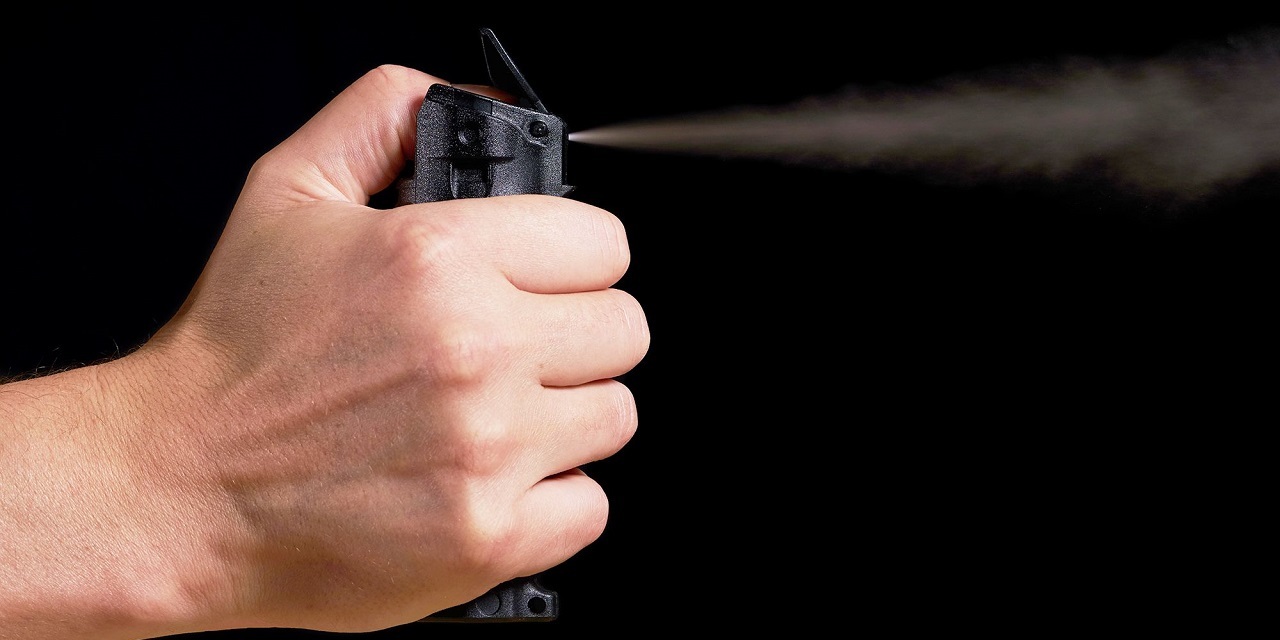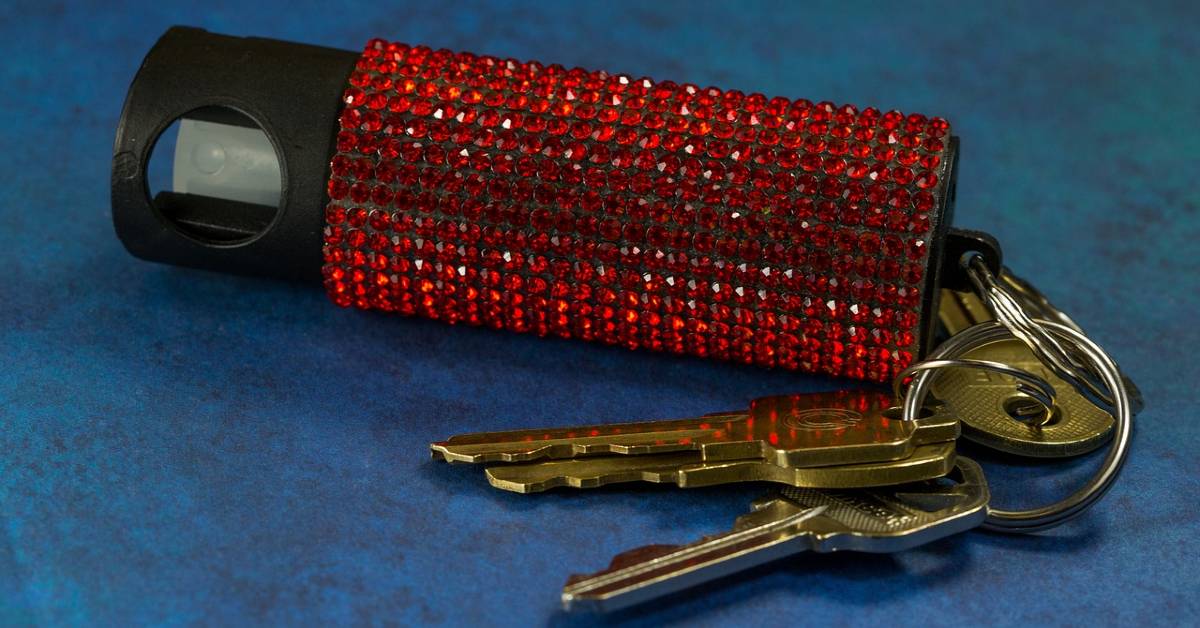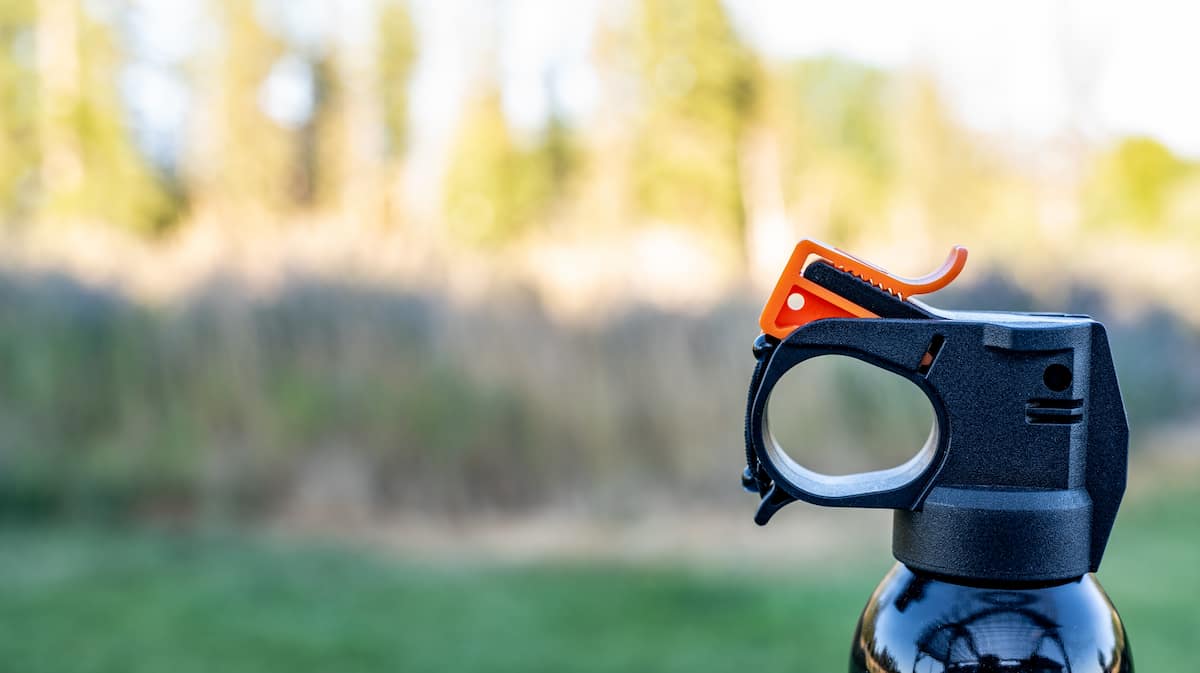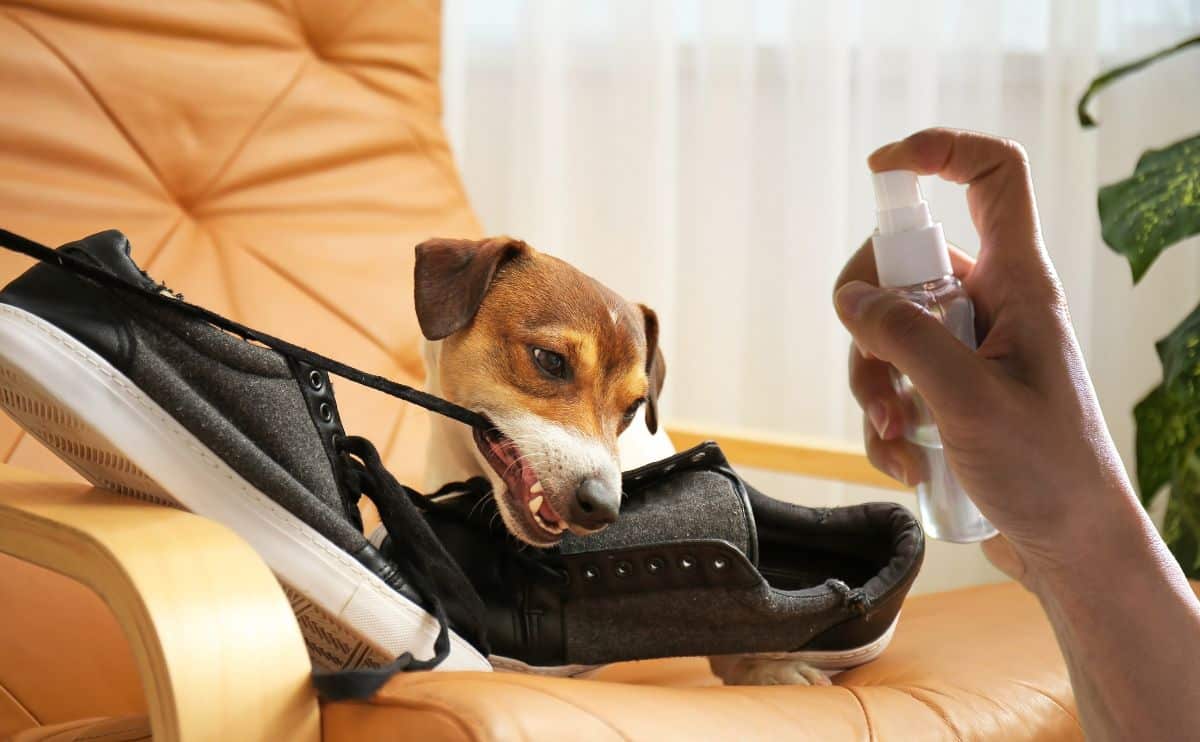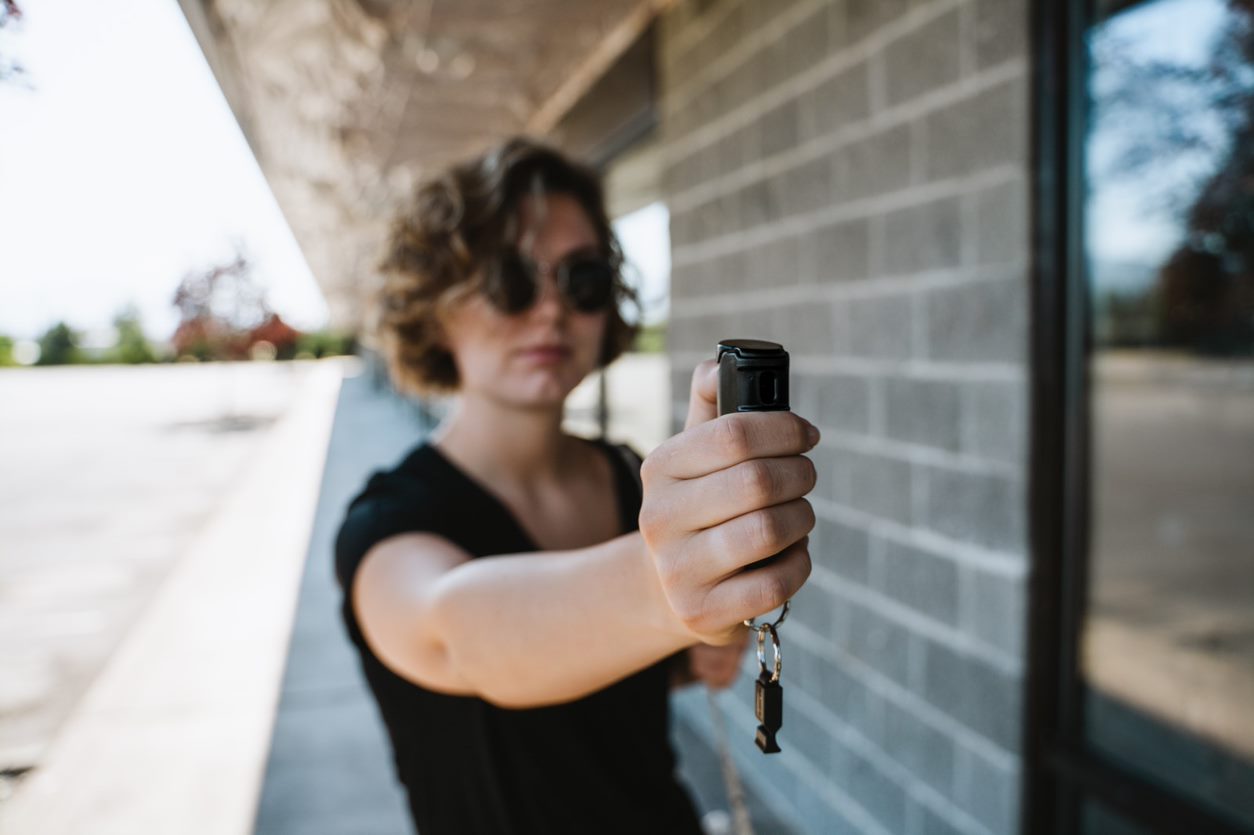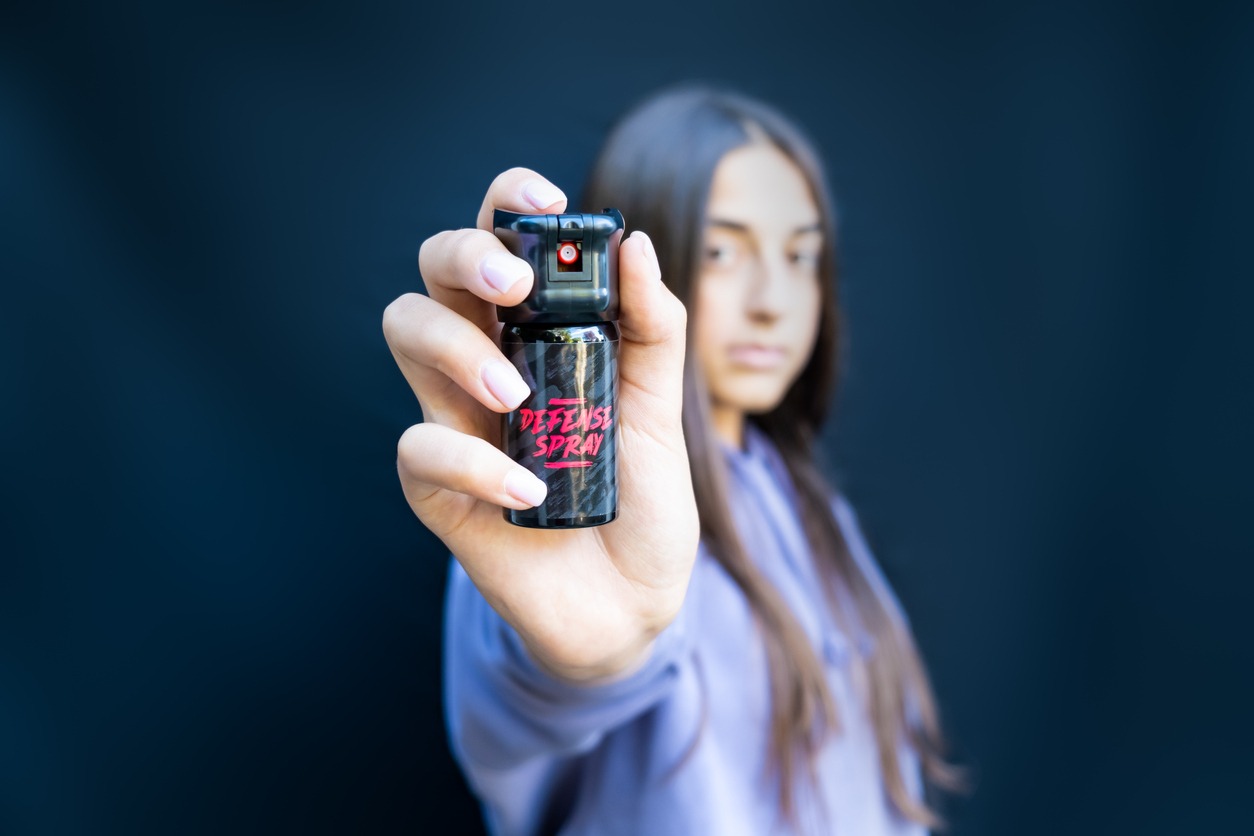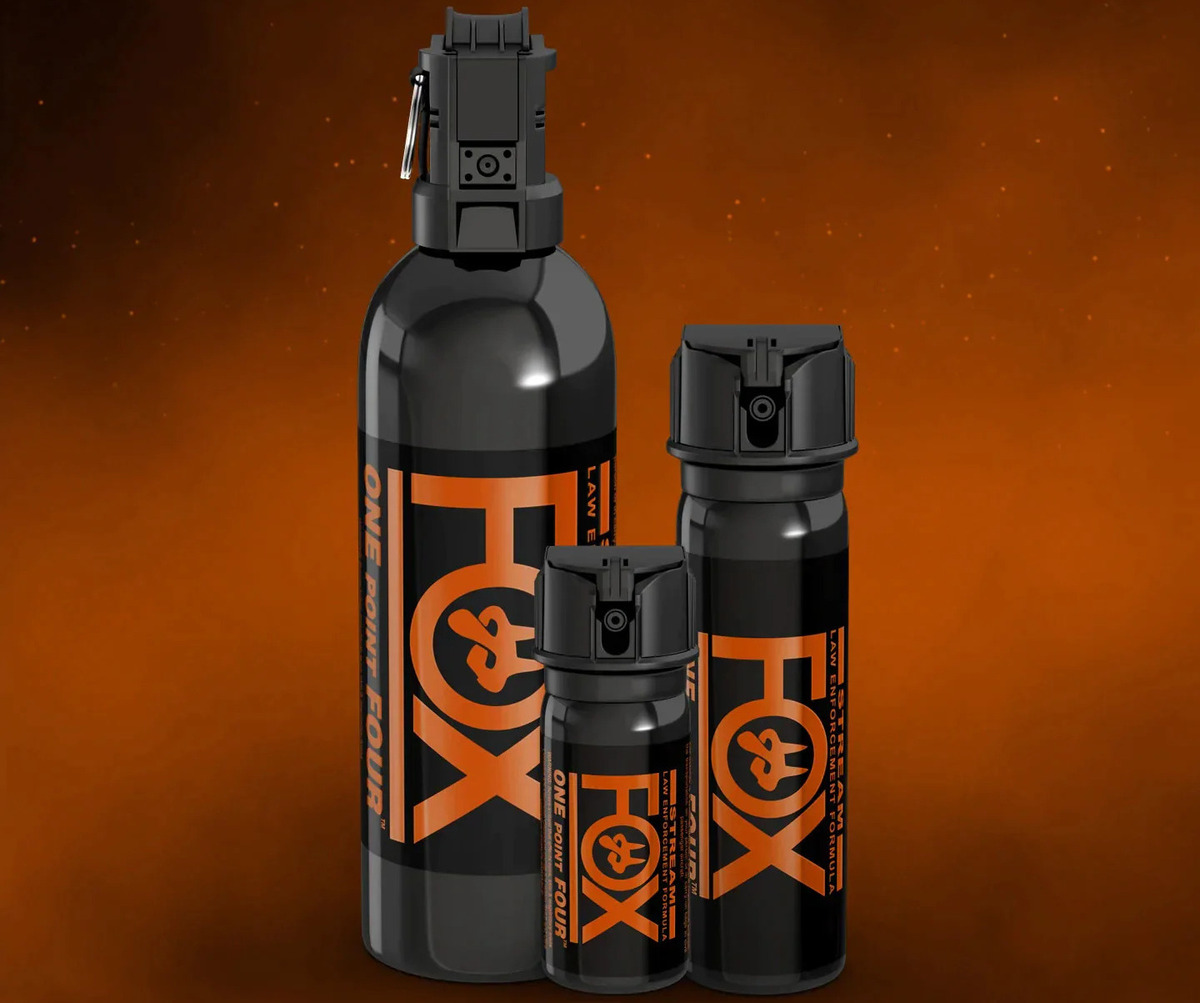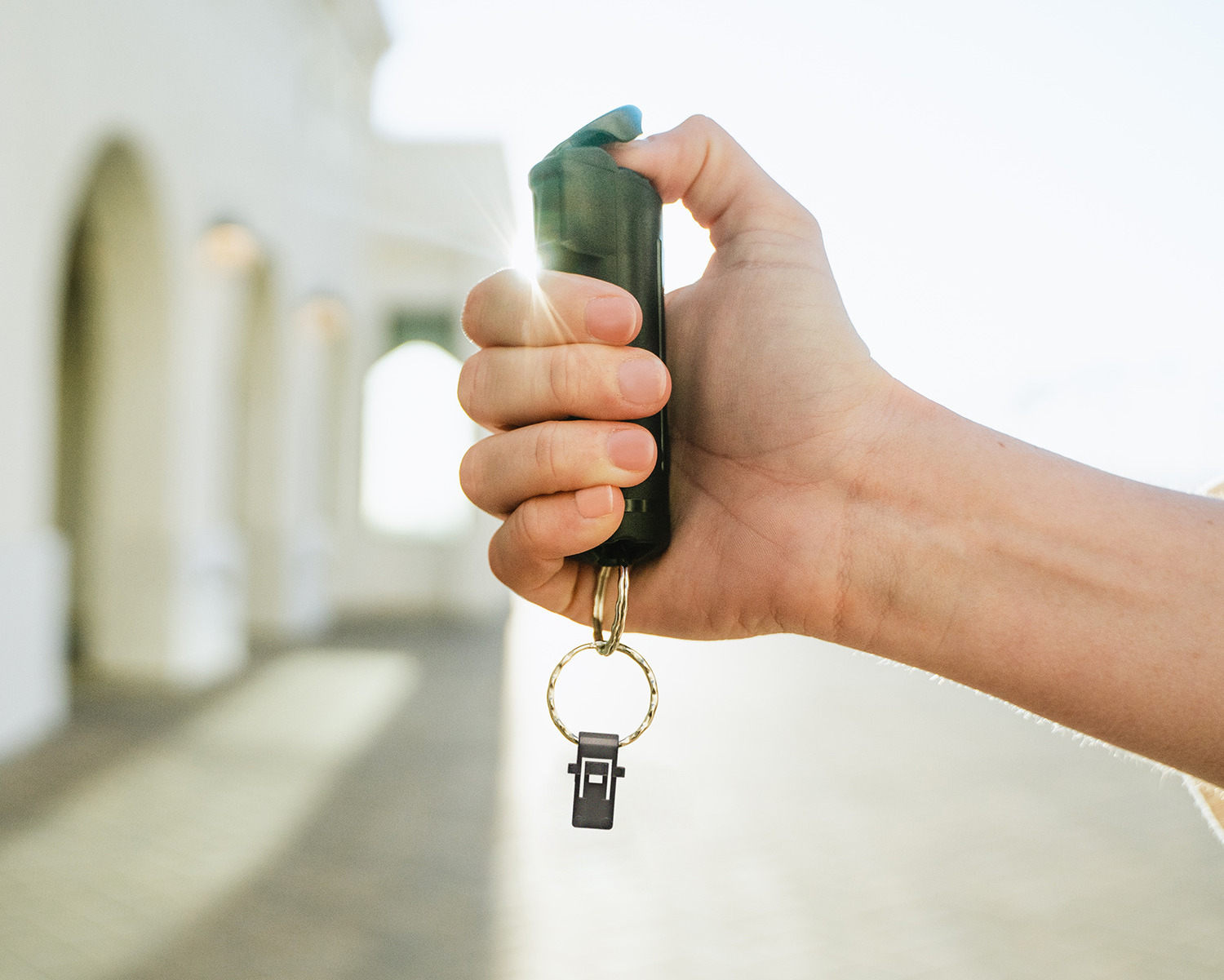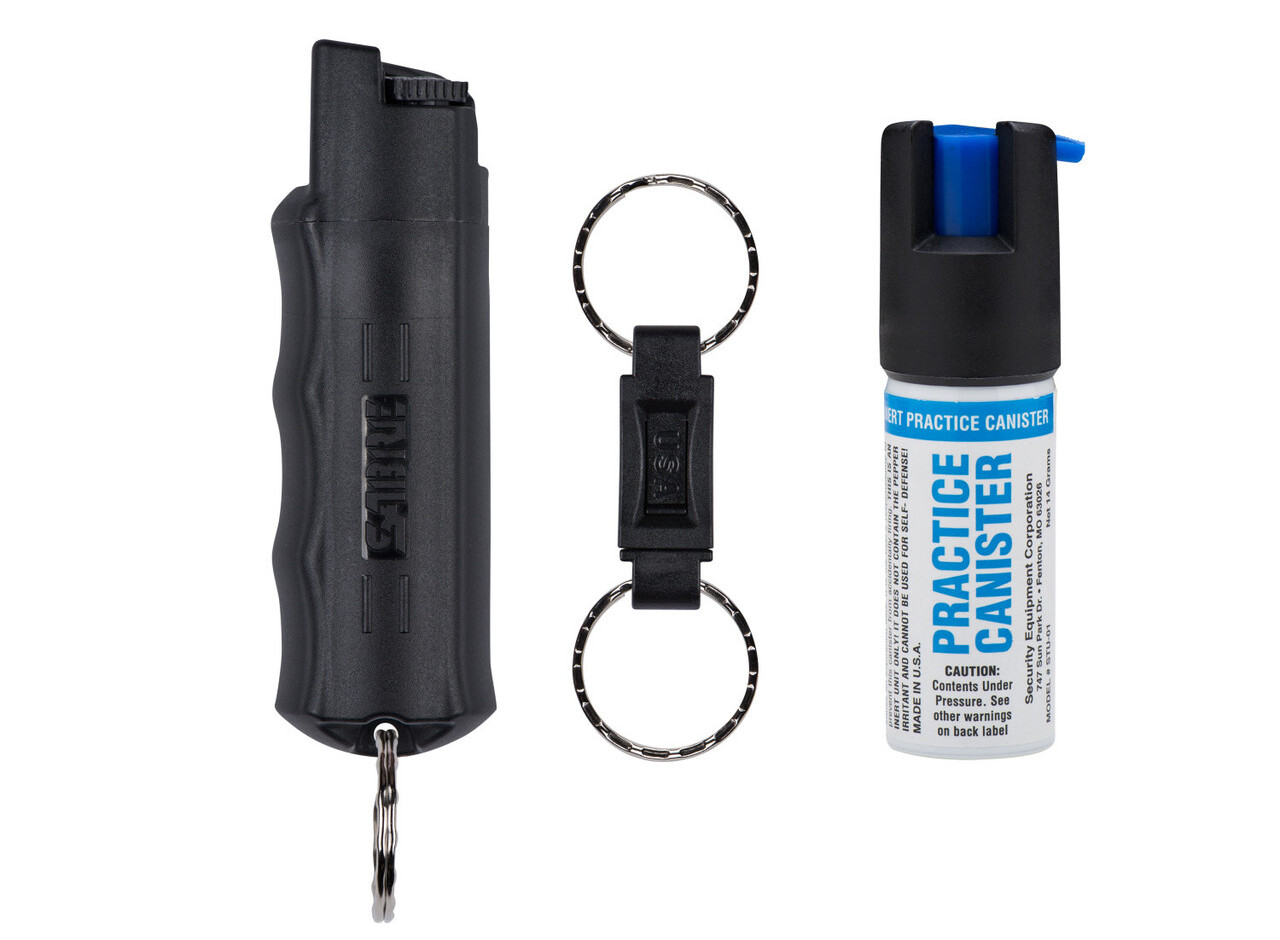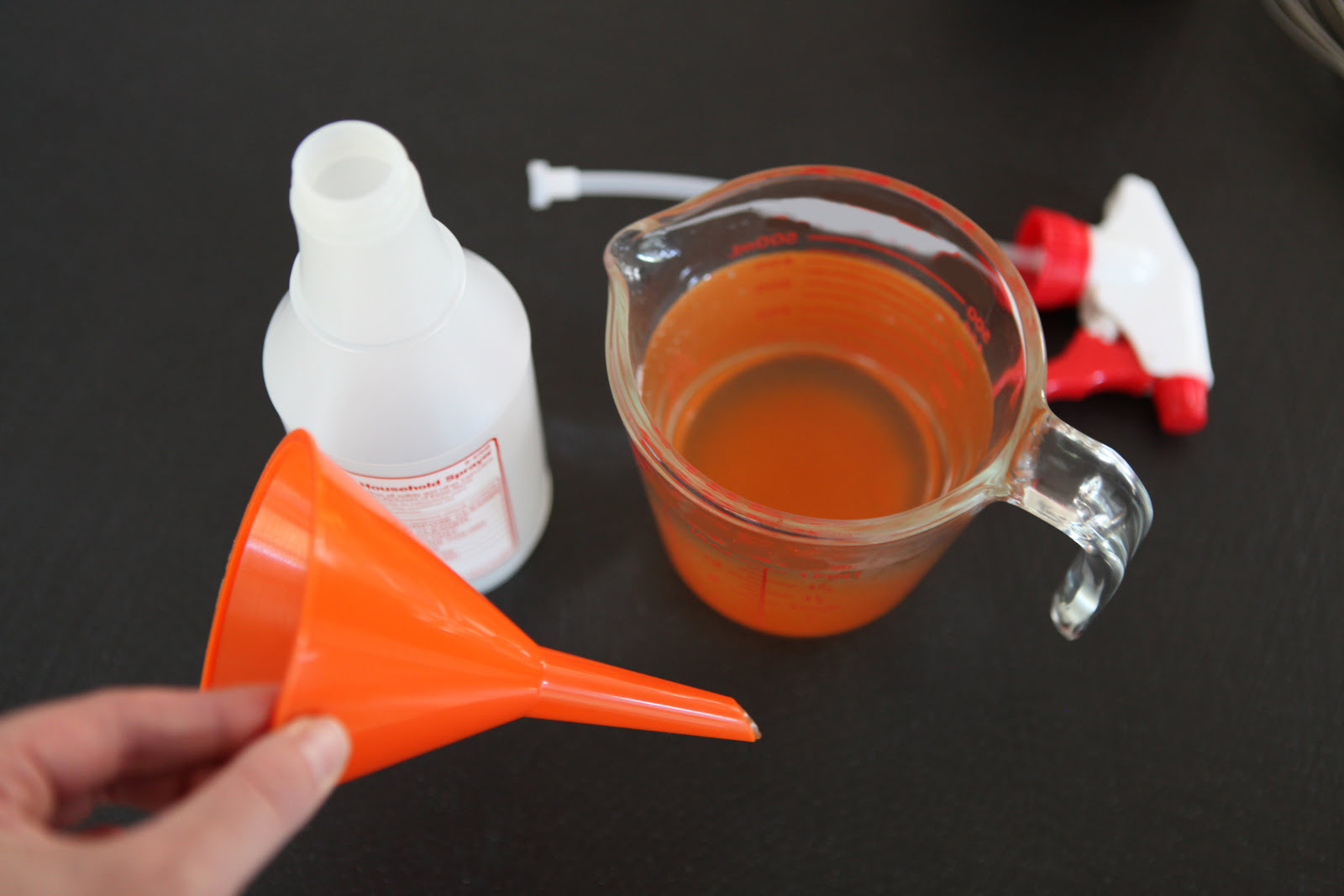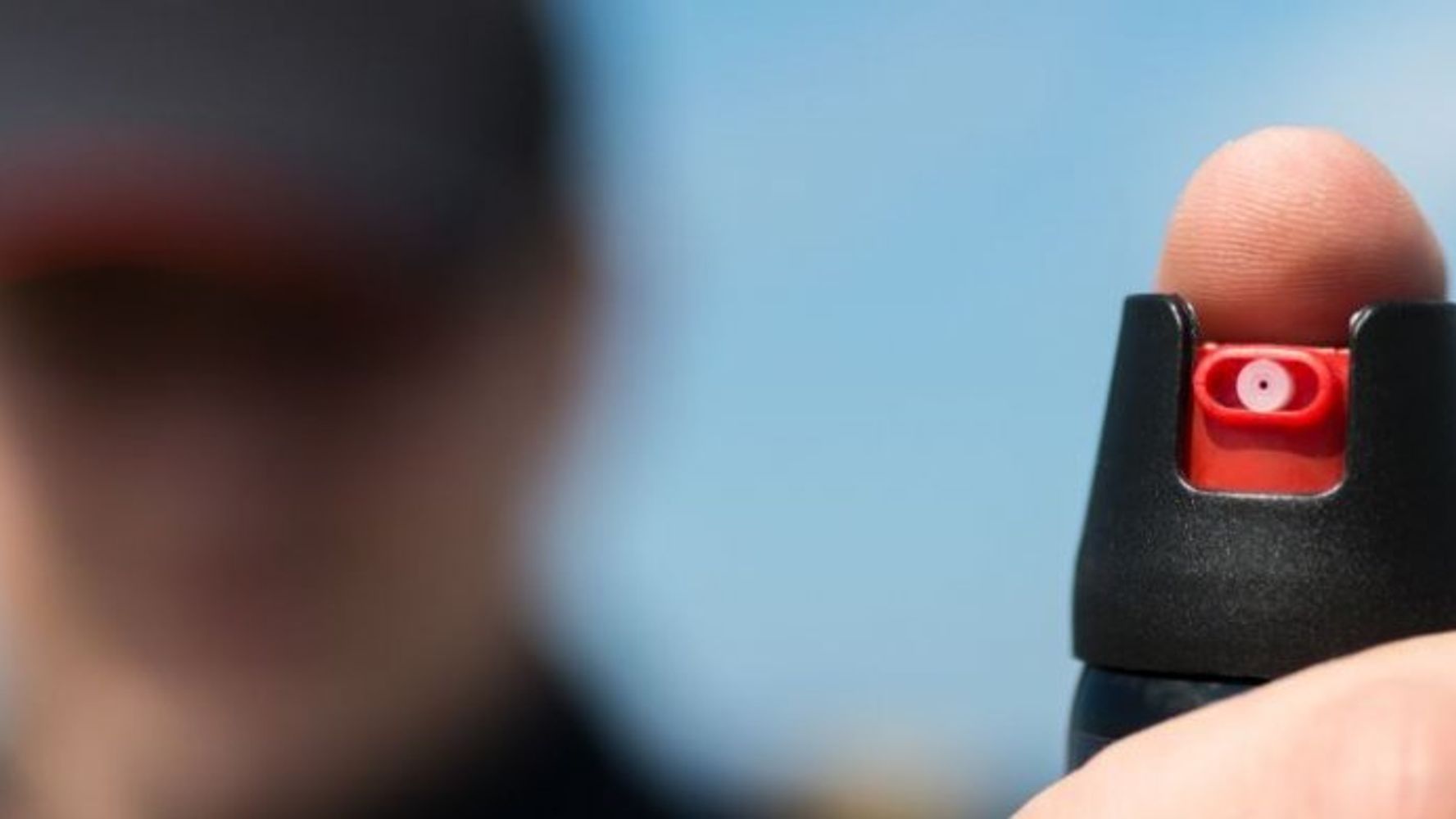Home>Home Security and Surveillance>How To Spray Pepper Spray
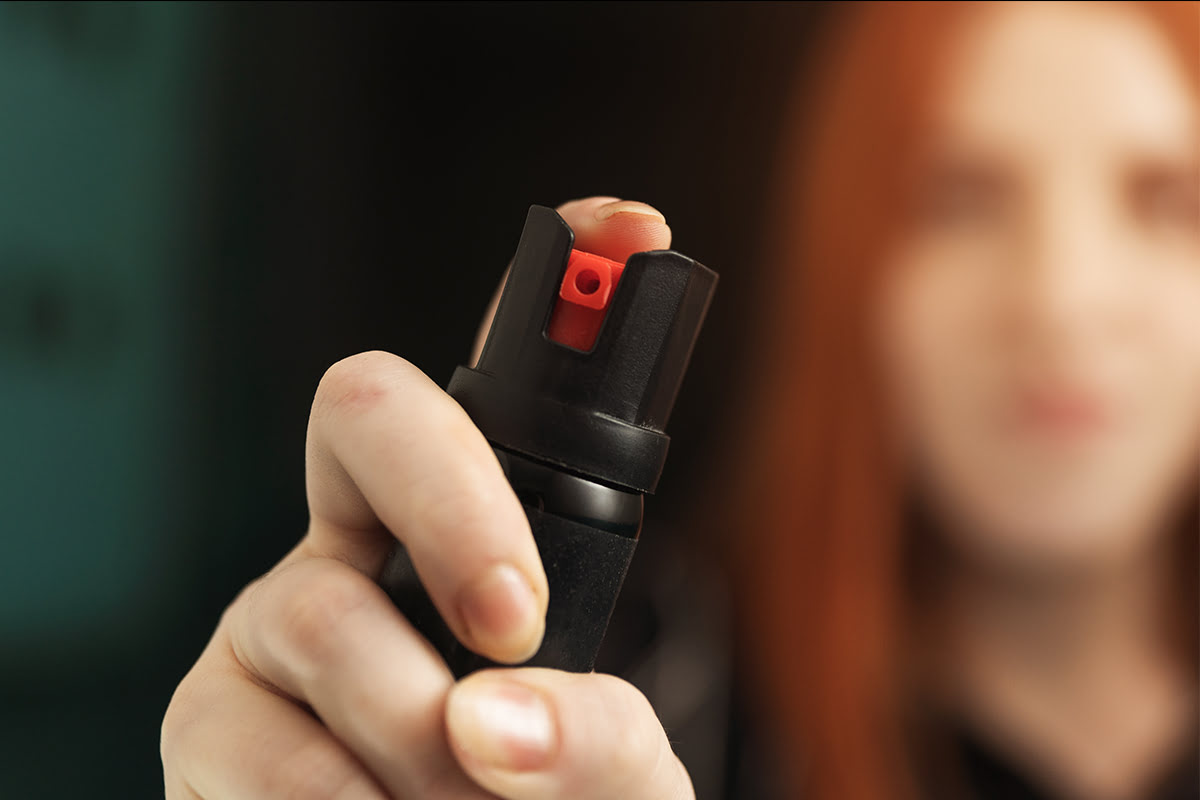

Home Security and Surveillance
How To Spray Pepper Spray
Modified: March 24, 2024
Learn how to effectively use pepper spray for home security and surveillance. Protect yourself with this essential self-defense tool.
(Many of the links in this article redirect to a specific reviewed product. Your purchase of these products through affiliate links helps to generate commission for Storables.com, at no extra cost. Learn more)
Introduction
Ensuring the safety and security of our homes and loved ones is of utmost importance. In today’s world, where crime rates are on the rise, it is crucial to take proactive measures to protect ourselves. One effective tool that can provide an added layer of security is pepper spray.
Pepper spray, also known as OC spray (oleoresin capsicum spray), is a non-lethal self-defense weapon that temporarily incapacitates an attacker by causing intense discomfort in their eyes, respiratory system, and skin. It is an invaluable tool for personal safety, allowing you to defend yourself in dangerous situations.
This comprehensive guide will walk you through the steps of how to effectively use pepper spray. From choosing the right product to mastering the spraying technique, we will cover all the critical aspects to ensure your safety and boost your confidence in utilizing this self-defense tool.
Before we dive into the specific steps, it is important to mention that pepper spray should only be used in self-defense situations and in accordance with local laws and regulations. Now, let’s get started on your journey to becoming proficient in using pepper spray.
Key Takeaways:
- Choose a pepper spray with at least 2 million SHU for maximum effectiveness. Consider size, formula, and dispenser type based on your lifestyle and needs. Always check the expiration date and choose a reputable brand.
- Practice your aim and technique in a safe, open space with good ventilation. Familiarize yourself with the activation mechanism and master the spraying motion. Understand the effects and aftermath of using pepper spray for responsible self-defense.
Read more: How To Store Pepper Spray
Step 1: Choose the right pepper spray
When it comes to pepper spray, not all products are created equal. It’s important to choose a pepper spray that matches your needs and provides the maximum effectiveness. Here are some factors to consider when selecting the right pepper spray:
- Strength: Pepper spray is available in different strengths, usually measured in Scoville Heat Units (SHU). The higher the SHU, the stronger the spray. Look for a spray with a concentration of at least 2 million SHU.
- Formula: Pepper sprays can have different formulas, including OC only, OC with tear gas, or a combination of OC, tear gas, and UV marking dye. Consider your specific needs and preferences when choosing the formula.
- Size: Pepper sprays come in various sizes, from small keychain models to larger canisters. Consider your lifestyle and how you plan to carry the spray. Compact sizes are convenient for on-the-go use.
- Dispenser type: There are different types of dispensers, such as aerosol spray, stream spray, and fogger. Each type has its advantages and limitations. Consider which dispenser type will be most suitable for your intended use.
- Reliability: Opt for a pepper spray brand that is reputable and trustworthy. Read reviews and do thorough research to ensure you are purchasing from a reliable manufacturer.
It is also important to note that pepper spray has an expiration date. Check the expiration date on the product before purchasing, and remember to replace your spray once it has expired to ensure it remains effective.
By taking these factors into consideration, you can choose a pepper spray that aligns with your personal requirements and gives you the confidence that you are equipped with an effective self-defense tool.
Step 2: Familiarize yourself with the product
Once you have chosen the right pepper spray, it is crucial to familiarize yourself with the product and understand its components and features. This will not only help you feel more confident in using it but also ensure that you can quickly and effectively deploy the spray when needed. Here are some important aspects to consider:
- Anatomy of the canister: Take a close look at the pepper spray canister and become familiar with its various components. Identify the nozzle or dispenser, safety mechanism, and any additional features it may have, such as an attachment for easy carrying.
- Safety mechanism: Most pepper sprays come with a safety mechanism to prevent accidental discharge. Learn how the safety mechanism works and practice disengaging it smoothly and swiftly in case of an emergency.
- Additional features: Some pepper sprays are equipped with additional features such as built-in LED lights or a keychain attachment. Familiarize yourself with these features and understand how they can enhance your overall experience and accessibility.
- Practice canister: Consider purchasing a practice canister or inert training spray that does not contain the active ingredients. This will allow you to practice using the spray in a safe and controlled environment, getting a feel for its range, spray pattern, and activation mechanism.
By becoming intimately familiar with your pepper spray, you will develop a better understanding of its functionality and be better prepared to use it effectively in a high-stress situation. This familiarity will build your confidence and ensure that you can rely on the spray when it matters most.
Step 3: Read the instructions and safety guidelines
Before using any product, it is essential to thoroughly read and understand the instructions and safety guidelines provided by the manufacturer. Pepper spray is no exception. Following the instructions and adhering to the safety guidelines will not only optimize the effectiveness of the spray but also ensure your safety and the safety of those around you. Here are some key points to consider:
- Read the product manual: Take the time to read the instruction manual or user guide that comes with your pepper spray. Pay attention to the specific steps for activating and discharging the spray, as well as any unique features or precautions mentioned.
- Understand the legal regulations: Be aware of the legal requirements and restrictions regarding the possession and use of pepper spray in your jurisdiction. Familiarize yourself with any limitations on spray strength, permissible areas of use, and legal consequences for misuse.
- Identify potential risks: Pay attention to any warnings or precautions mentioned in the instructions. This might include avoiding contact with the spray yourself, keeping it out of reach of children, and being cautious in windy conditions that could cause the spray to blow back towards you.
- Practice proper storage: Follow the instructions regarding storage and maintenance of the pepper spray. This typically involves keeping it away from extreme temperatures, ensuring the safety mechanism is engaged when not in use, and regularly checking for signs of damage or leakage.
- Learn about aftercare: Understand the recommended aftercare process in case the spray comes into contact with your skin or eyes, or those of an unintended target. This may involve rinsing with cold water, avoiding rubbing the affected area, and seeking medical assistance if necessary.
By familiarizing yourself with the instructions and safety guidelines, you will not only ensure safe usage of the pepper spray but also gain a better understanding of the precautions and best practices to follow. This knowledge will empower you to confidently handle the spray and effectively protect yourself in a self-defense situation.
Step 4: Find a suitable location for practice
Practicing with your pepper spray in a controlled environment is crucial for building confidence and familiarizing yourself with its operation. When selecting a location for practice, consider the following factors to ensure a safe and effective practice session:
- Open space: Choose an open area such as a backyard, park, or an empty parking lot. This will allow for ample space to move around and practice different spraying techniques without the risk of accidentally spraying others or surrounding objects.
- Good ventilation: Avoid practicing indoors or in poorly ventilated areas. The active ingredients in pepper spray can cause temporary respiratory discomfort, so it’s important to have fresh air circulation to minimize any potential effects.
- Distractable targets: Consider using objects or targets that can simulate a real-life scenario. Look for targets such as cardboard cutouts, foam mannequins, or even water-filled bottles. Remember to place the targets at a safe distance to prevent any accidental contact during practice.
- Safe backdrop: Choose a backdrop that can safely contain the spray, such as a solid wall or barrier. Avoid practicing near windows, cars, or delicate objects that could be damaged by the force of the spray or the active ingredients.
- Weather conditions: Check the weather forecast before practicing. Strong winds or rain can affect the accuracy and reach of the spray, making it unpredictable. If the conditions are unfavorable, consider rescheduling your practice session to a more suitable time.
Remember, safety should always be a top priority during practice sessions. Ensure that there are no people or pets within the vicinity of your practice area, and always follow the instructions and safety guidelines provided by the manufacturer.
By choosing a suitable location for practice, you can effectively hone your skills with the pepper spray and increase your confidence in using it to protect yourself in real-life situations.
Read more: What Pepper Is Used In Pepper Spray
Step 5: Practice your aim and technique
Once you have found a suitable practice location, it’s time to start working on your aim and technique with the pepper spray. Practicing regularly will enhance your accuracy and ensure that you can effectively deploy the spray when necessary. Here are some tips for practicing your aim and technique:
- Stance and posture: Adopt a stable and balanced stance with your feet shoulder-width apart. Keep your body relaxed but ready to move if needed.
- Target focus: Focus your attention on the target rather than on the canister itself. This will help you maintain better aim and improve your reaction time.
- Hand positioning: Grip the pepper spray canister firmly with your dominant hand. Position your thumb over the safety mechanism, ready to disengage it when needed.
- Sight alignment: Align your shooting eye (dominant eye) with the target. Practice lining up the front sight of the canister with the target, ensuring proper alignment throughout your practice sessions.
- Spray pattern: Understand the specific spray pattern of your pepper spray. Some sprays produce a stream, while others disperse in a fog or cone shape. Adjust your aim and technique accordingly to optimize the coverage and effectiveness of the spray.
- Distance management: Experiment with different distances when practicing. Start with shorter distances and gradually increase the distance as your aim and confidence improve. This will help you gauge the spray’s range and adjust your technique accordingly.
- Movement drills: Include movement drills in your practice sessions to simulate real-life scenarios. Practice stepping back, sidestepping, or creating distance from the target while maintaining your aim and balance.
Remember to practice in a controlled and safe manner, keeping in mind the safety guidelines and potential risks associated with pepper spray. As you continue practicing, you will see a noticeable improvement in your aim and technique, giving you the confidence to effectively deploy the spray in self-defense situations.
When using pepper spray, aim for the attacker’s face and spray in short bursts to create a mist. Keep a safe distance and be aware of wind direction to avoid getting the spray in your own eyes.
Step 6: Learn how to activate the spray
Learning how to properly activate your pepper spray is essential for quick and effective deployment in times of need. Familiarize yourself with the specific activation mechanism of your spray to ensure a smooth and seamless operation. Here’s a general guide on how to activate pepper spray:
- Hold the canister securely: Grip the canister with your dominant hand, making sure your thumb is positioned over the safety mechanism.
- Disengage the safety: Using your thumb, press or slide the safety mechanism to disengage it. The specific method may vary depending on the design of your pepper spray.
- Practice thumb placement: Avoid placing your thumb directly on the nozzle or dispenser to prevent accidental activation. Instead, position your thumb beside the nozzle, ready to apply pressure when needed.
- Aim at the intended target: Direct the nozzle or dispenser of the pepper spray towards your target. Maintain proper sight alignment and focus on your aim.
- Apply pressure to the nozzle: Using your thumb, apply steady and firm pressure to the nozzle or dispenser. This will activate the spray and release the pepper formulation.
- Sweep the target: Once the spray is activated, move your hand in a controlled sweeping motion to cover the target area thoroughly. Adjust the speed and angle of your motion to maximize the coverage.
- Practice trigger control: Avoid spraying continuously in one direction. Instead, practice short bursts or controlled trigger pulls to conserve the spray and maintain accuracy.
It is crucial to practice activating the spray in a safe and controlled environment to become familiar with the specific activation mechanism of your pepper spray. This practice will help you develop muscle memory and enable you to activate the spray quickly and effectively in high-stress situations.
Remember to always follow the instructions provided by the manufacturer and exercise caution when handling the pepper spray. Safety should remain a top priority throughout your practice sessions and in real-life scenarios.
Step 7: Master the spraying motion
Once you have learned how to activate your pepper spray, it’s time to focus on mastering the spraying motion. The way you deploy the spray can greatly impact its effectiveness and ensure that it reaches the intended target. Here are some guidelines to help you master the spraying motion:
- Keep a firm grip: Hold the pepper spray canister securely with your dominant hand, maintaining a strong and stable grip throughout the spraying motion. This will help you maintain control and accuracy.
- Extend your arm: Extend your arm fully towards the target, ensuring that your aim is steady and precise. This will help you maximize the distance and coverage of the spray.
- Aim for the target’s face: Direct the spray towards the attacker’s face, specifically targeting the eyes, nose, and mouth. This will cause temporary incapacitation, giving you an opportunity to escape or seek help.
- Use a consistent motion: Adopt a smooth and fluid spraying motion, moving your hand in a controlled and consistent manner. Avoid jerky movements that can affect your aim and coverage.
- Continuously assess the situation: As you deploy the spray, remain vigilant and assess the situation. Observe the attacker’s reaction and be prepared to take further action if necessary.
- Practice different spraying techniques: Experiment with different spraying techniques, such as short bursts, a controlled sweeping motion, or circular patterns. This will help you determine the technique that works best for you in different scenarios.
- Consider wind direction: Take into account the wind direction when spraying. Aim slightly into the wind to minimize the chances of the spray blowing back towards you. Be aware that wind can affect the distance and accuracy of the spray.
Regular practice and familiarity with the spraying motion will increase your confidence and ensure that you can effectively deploy the pepper spray, should the need arise. Remember to always prioritize your safety and follow local laws and regulations regarding the use of pepper spray.
Developing precision and accuracy in your spraying technique will significantly enhance the overall effectiveness of the pepper spray as a self-defense tool. Practice regularly and continue to refine your skills to maximize your ability to protect yourself and your loved ones.
Step 8: Understand the effects and aftermath
Understanding the effects and aftermath of using pepper spray is crucial for responsible and effective self-defense. By being aware of what to expect, you can better assess the situation and take appropriate action. Here are some important points to consider:
- Temporary incapacitation: When deployed correctly, pepper spray causes temporary incapacitation to an attacker. The active ingredients, namely capsaicinoids, irritate the eyes, nose, and throat, leading to severe discomfort, tearing, coughing, and sneezing. This provides you with an opportunity to escape or seek help.
- Range and effectiveness: Pay attention to the effective range of your pepper spray. Most sprays have a range of around 6 to 12 feet, but this can vary depending on the specific product. It’s crucial to practice within the recommended range to ensure optimal effectiveness.
- Duration of effects: The effects of pepper spray typically last for approximately 30 minutes to an hour. However, individual reactions can vary. It’s important to remember that the effects are temporary and will gradually subside, allowing the attacker to recover.
- Collateral exposure: In situations where you need to use pepper spray in a crowded area, be aware of the potential for collateral exposure. Take measures to minimize the risk to innocent bystanders by considering the direction of spray and aiming specifically at the intended target.
- Aftercare: If you accidentally come into contact with the spray yourself or have residual effects on your skin or clothing, it’s important to follow proper aftercare. Rinse affected areas with cool water, avoid touching or rubbing the area, and seek medical attention if necessary.
- Legal considerations: Be familiar with the laws and regulations surrounding the use of pepper spray in your jurisdiction. Understand when it is legally acceptable to use the spray and be aware of any potential consequences for misuse or excessive force.
By understanding the effects and aftermath of using pepper spray, you can make informed decisions and use the self-defense tool responsibly. Remember, the goal is always to protect yourself and minimize harm, so use pepper spray as a last resort, when all other options have been exhausted.
Stay informed and regularly review local laws and regulations to ensure that you are using pepper spray in accordance with legal guidelines for your safety and the safety of others.
Read more: What Is Pepper Spray
Step 9: Take necessary precautions and seek professional training
While pepper spray is a valuable self-defense tool, it’s important to take necessary precautions and seek professional training to ensure you can use it effectively and responsibly. Here are essential steps to consider:
- Know your local laws: Understand the laws and regulations regarding the possession and use of pepper spray in your area. Familiarize yourself with any restrictions on carrying pepper spray and the legal consequences for misuse. Compliance with local laws is crucial for your safety and the safety of others.
- Ensure proper storage and maintenance: Store your pepper spray in a secure and easily accessible location. Regularly check the canister for any signs of damage, leaks, or expiration date. Follow the manufacturer’s instructions regarding maintenance to ensure the spray remains effective when needed.
- Seek professional training: Consider receiving professional training in self-defense techniques that include the proper use of pepper spray. Trained instructors can teach you the best practices, strategies, and techniques for effectively deploying the spray, enhancing your skills and confidence.
- Practice regularly: Continuously practice with your pepper spray to maintain proficiency. Regular practice helps you familiarize yourself with the spray, improve your aim and technique, and build muscle memory for quick and effective deployment.
- Stay aware of your surroundings: Being aware of your environment is key. By paying attention to your surroundings and potential risks, you can identify and assess potential threats, giving you the opportunity to prepare and take appropriate action if necessary.
- Consider additional self-defense measures: While pepper spray is effective, it may not be the only tool you need. Explore other self-defense strategies and techniques, such as personal alarms or self-defense classes, to enhance your overall safety and preparedness.
Remember, personal safety is a continuous journey. By taking necessary precautions, staying informed, and seeking professional training, you can maximize the effectiveness of pepper spray and enhance your overall safety and self-defense capabilities.
Always prioritize your well-being and use pepper spray responsibly, ensuring that it is used within legal boundaries and in genuine self-defense situations.
Conclusion
Protecting yourself and your loved ones is a top priority, and pepper spray is a valuable tool in your arsenal when it comes to personal safety and self-defense. By following the steps outlined in this guide, you can learn how to effectively use pepper spray and enhance your confidence in handling this non-lethal self-defense weapon.
Choosing the right pepper spray that matches your needs, familiarizing yourself with the product, and understanding its activation mechanism are crucial steps to ensure you are prepared. Practicing your aim and technique, mastering the spraying motion, and understanding the effects and aftermath of using pepper spray will further enhance your ability to protect yourself effectively.
However, it’s important to note that pepper spray should only be used in self-defense situations and in accordance with local laws and regulations. Responsible usage and compliance with legal guidelines are essential to prioritize your safety and prevent any unintended harm.
Professional training and ongoing practice are highly recommended. Seeking training from experts in self-defense techniques, including pepper spray usage, can provide you with valuable insights, enhance your skills, and ensure that you are prepared to defend yourself effectively.
In your journey to self-defense preparedness, remember to stay aware of your surroundings, take necessary precautions, and explore additional self-defense measures that align with your lifestyle and personal preferences.
By following these steps and adopting a proactive approach to personal safety, you can empower yourself with the knowledge and skills needed to protect yourself and your loved ones in potentially dangerous situations. Stay informed, stay prepared, and prioritize your safety at all times.
Frequently Asked Questions about How To Spray Pepper Spray
Was this page helpful?
At Storables.com, we guarantee accurate and reliable information. Our content, validated by Expert Board Contributors, is crafted following stringent Editorial Policies. We're committed to providing you with well-researched, expert-backed insights for all your informational needs.
